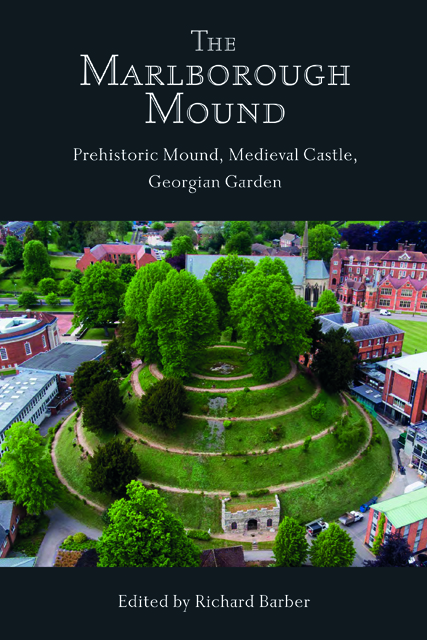Book contents
- Frontmatter
- Contents
- List of Figures
- Acknowledgements
- Preface
- 1 ‘One remarkable earthen-work’: The Neolithic Origins of the Marlborough Mound
- Afterword: The Round Mounds Project
- 2 Castles and the Landscape of Norman Wessex, c. 1066–1154
- 3 Marlborough Castle in the Middle Ages
- 4 The Mound as a Garden Feature
- Epilogue: The Marlborough Mound Trust
- A Inquisition into the State of Marlborough Castle, 11 September 1327
- B Castellum Merlebergensis, by H. C. Brentnall, F.S.A.
- C Constables of Marlborough Castle
- D Marlborough Castle: Archaeological Findings for the Medieval Period
- Bibliography
- Notes
- Contributors
- Index
Preface
Published online by Cambridge University Press: 11 January 2023
- Frontmatter
- Contents
- List of Figures
- Acknowledgements
- Preface
- 1 ‘One remarkable earthen-work’: The Neolithic Origins of the Marlborough Mound
- Afterword: The Round Mounds Project
- 2 Castles and the Landscape of Norman Wessex, c. 1066–1154
- 3 Marlborough Castle in the Middle Ages
- 4 The Mound as a Garden Feature
- Epilogue: The Marlborough Mound Trust
- A Inquisition into the State of Marlborough Castle, 11 September 1327
- B Castellum Merlebergensis, by H. C. Brentnall, F.S.A.
- C Constables of Marlborough Castle
- D Marlborough Castle: Archaeological Findings for the Medieval Period
- Bibliography
- Notes
- Contributors
- Index
Summary
When, in 2000, Eric Elstob set up and endowed the Marlborough Mound Trust, he was intent on focussing much-needed attention on the remarkable, but neglected, monument that nestled, largely obscured by trees and bushes, in a corner of the grounds of Marlborough College. Though the Mound played a part in the lives of college pupils, including Eric, serving as a place of escape for adventure and contemplation, and was occasionally referred to in the academic literature, it had little presence in the public imagination, nor did it feature large in current archaeological debate. The Trust changed all that. Working closely with the College over the last two decades, it has given the Mound a new visibility, in all senses of the word, and has worked to stabilize its fragile fabric for future generations to continue to enjoy.
The Marlborough Mound is a ‘special place’ – a location that, for four thousand years, has been of continuing significance to successive generations. As a place where springs break out of the ground and flow into the River Kennet, it clearly had meaning to the Late Neolithic population who, for reasons which we will never know, decided to mark the spot with a great mound sixteen metres high and nearly eighty metres in diameter. It echoed the even larger mound of Silbury Hill, eight kilometres up river, both being elements in a complex ritual landscape which we are only now beginning to untangle. In this way the monumentalizing of the landscape began, and this mound, built at the end of the third millennium BC, has dominated human actions ever since. Roman engineers used it as a siting point for laying out a road, Normans found it to be a convenient base for a castle, which flourished as a royal residence and regional stronghold throughout the twelfth and thirteenth centuries, and from the seventeenth century it became the visual focus of a formal garden belonging to the Seymour family. Thus it has an unusual and distinguished history and one well worthy of considered attention.
The first task of the Trust was to ensure the stability of the Mound by removing most of the trees and bushes and other encumbrances, restoring the spiral path constructed when the Mound became a garden feature, and stabilizing the slopes with an appropriate vegetation cover.
- Type
- Chapter
- Information
- The Marlborough MoundPrehistoric Mound, Medieval Castle, Georgian Garden, pp. x - xiiPublisher: Boydell & BrewerPrint publication year: 2022



